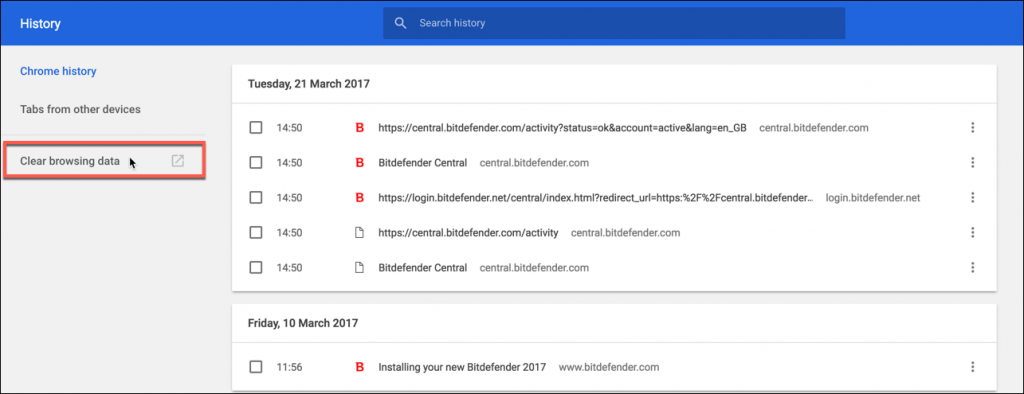


- #Refresh cache on chrome for mac mac os x
- #Refresh cache on chrome for mac windows
This method can be used for the Chrome browser regardless of the operating system. Make sure it is not running in the background as well.
In DNS 1: enter the primary DNS server, and in DNS 2: enter the secondary DNS server. Go to DNS settings and manually enter the DNS servers. A pop-up will appear, and you need to tap on "Advanced options". Open Wi-Fi and then long-press the network you want to modify DNS for. Here go to "Storage" and tap on "Clear Cache". In the right pane, click the "Clear host cache" button. In the URL bar, type in chrome://net-internals/#dns. Press and hold both the Sleep/Wake and Home buttons for at least 10 seconds, until you see the Apple logo. Click "Reset", then "Reset Network Settings". That will clear your DNS cache but will also immediately disable your Wi-Fi connection. Rebooting your device also clears your DNS cache. The easiest solution is to toggle the Airplane mode in iPhone. There are three options available to flush DNS cache in iPhone. Run the command in the terminal: /etc/init.d/nscd restart. Open up a command terminal (either as root or run step 2 with sudo ). If you are running the nscd Name Service Cache Daemon, then you will need to do the following. You can verify that this ran correctly by running the command: systemd-resolve -statistics Run the command in the terminal: systemd-resolve -flush-caches. Open up a command terminal (either as root or run with sudo). Most Ubuntu and Debian systems run a system that uses systemd-resolve daemon you will need to do the following. macOS 11 (Big Sur) sudo dscacheutil -flushcache sudo killall -HUP mDNSResponder macOS 10.15 (Catalina) sudo killall -HUP mDNSResponder macOS 10.14 (Mojave) sudo killall -HUP mDNSResponder macOS 10.13 (High Sierra) sudo killall -HUP mDNSResponder OS X 12 (Sierra) and later sudo killall -HUP mDNSResponder sudo killall mDNSResponderHelper sudo dscacheutil -flushcache OS X 11 (El Capitan) and OS X 12 (Sierra) sudo killall -HUP mDNSResponder OS X 10.10 (Yosemite) Versions 10.10.4+ sudo dscacheutil -flushcache sudo killall -HUP mDNSResponder Versions 10.10.1, 10.10.2, 10.10.3 sudo discoveryutil udnsflushcaches OS X 10.9 (Mavericks) dscacheutil -flushcache sudo killall -HUP mDNSResponder OS X 10.7 (Lion) and 10.8 (Mountain Lion) sudo killall -HUP mDNSResponder OS X 10.5 (Leopard) and 10.6 (Snow Leopard) dscacheutil -flushcache OS X 10.4 (Tiger) lookupd -flushcache Once opened, run the command below that corresponds to your version of OS X. First, make sure you open the Terminal on your computer. #Refresh cache on chrome for mac mac os x
Type in the command ipconfig /flushdns and press Enterįlushing the DNS in Mac OS X is an easy process, but the steps taken will depend on which version of OS X is running as your operating system. #Refresh cache on chrome for mac windows
Press Windows key + X and select the Command Prompt (Admin) option from the Power User menu.Type the following command, then press Enter:īecause of the system security policies run cmd as administrator user and follow below steps to flush DNS cache.Select the Start button, then type powershell.ipconfig /renew: To reset and request a new IP address.ipconfig /release: To release the current IP address settings.ipconfig /registerdns: To register your DNS cache recorded in the Hosts file.ipconfig /displaydns: It displays your current DNS cache under Windows IP configuration.( be sure there is a space before the slash)Ī command box will flash on the screen for a split second, and the DNS Resolver cache is cleared.īesides, there are some other related commands that you might be interested in: Type ipconfig /flushdns then press Enter.Right-click Command Prompt, then choose Run as Administrator.To reset the DNS resolver cache, perform the following steps: OS X 10.5 (Leopard) and 10.6 (Snow Leopard)Ĭommand Prompt and Windows Powershell, which is a new addition to Windows, can be used to clear DNS cache.OS X 10.7 (Lion) and 10.8 (Mountain Lion).macOS 10.12 (Sierra) and OS X 10.11 (El Capitan).






 0 kommentar(er)
0 kommentar(er)
